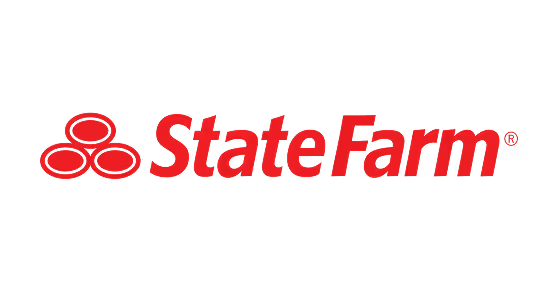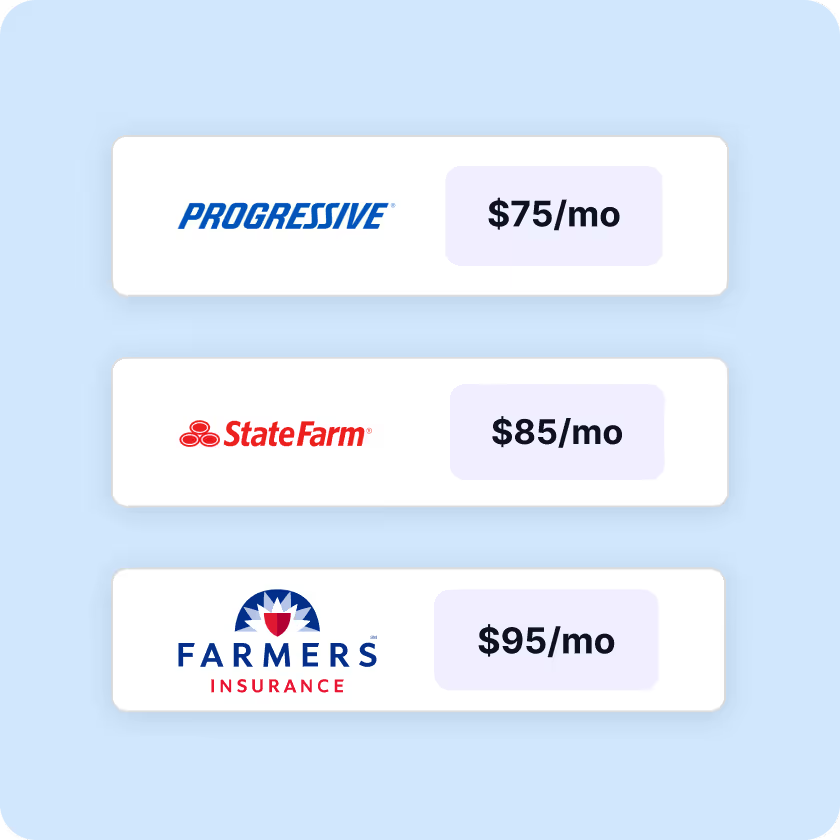
Kudos has partnered with CardRatings and Red Ventures for our coverage of credit card products. Kudos, CardRatings, and Red Ventures may receive a commission from card issuers. Kudos may receive commission from card issuers. Some of the card offers that appear on Kudos are from advertisers and may impact how and where card products appear on the site. Kudos tries to include as many card companies and offers as we are aware of, including offers from issuers that don't pay us, but we may not cover all card companies or all available card offers. You don't have to use our links, but we're grateful when you do!
Chase Sapphire Reserve vs Bank of America Premium Rewards: Which Is Better In 2025?
July 1, 2025


Editor's Picks
- Chase Sapphire Reserve® Credit Card: This premium card is designed for frequent travelers and diners who want to earn high rewards and access luxury travel benefits.
- Bank of America® Premium Rewards® Credit Card: A great option for those who want solid rewards on travel, dining, and all other purchases, especially for existing Bank of America customers.
Chase Sapphire Reserve® Breakdown
[[ SINGLE_CARD * {"id": "510", "isExpanded": "false", "bestForCategoryId": "15", "bestForText": "Frequent Travelers", "headerHint": "$300 Annual Travel Credit"} ]]
Why We Like It
Here’s a closer look at why we’re fans of the Chase Sapphire Reserve®.
- The card offers a generous $300 annual travel credit that automatically applies to a wide range of eligible purchases.
- Cardholders receive valuable perks like a Priority Pass Select membership for airport lounge access and an application fee credit for Global Entry, NEXUS, or TSA PreCheck.
- The $300 annual travel credit effectively lowers the $795 annual fee to a net cost of $495, making the card's premium benefits much more accessible (publisher-formulated estimate).
Pros
- Offers a generous annual travel credit, airport lounge access, and credits for expedited security screening programs.
- Features a flexible rewards program with valuable redemption options, including point transfers to leading airline and hotel partners.
- Includes a suite of comprehensive travel insurance and purchase protections.
Cons
- Carries a high annual fee that may not be justifiable for infrequent travelers.
- Approval typically requires an excellent credit score, making the card less accessible.
- The rewards program can be complex to navigate, and some benefits require manual enrollment.
Bank of America® Premium Rewards® Breakdown
[[ SINGLE_CARD * {"id": "189", "isExpanded": "false", "bestForCategoryId": "15", "bestForText": "Frequent Travelers", "headerHint": "2x Points on Dining and Travel"} ]]
Why We Like It
Here’s a closer look at why we think the Bank of America® Premium Rewards® card is a valuable choice for many travelers.
- You'll earn an unlimited 2 points per dollar on travel and dining purchases and 1.5 points per dollar on all other spending.
- The card comes with up to $100 in annual airline incidental fee credits and up to a $100 credit for your Global Entry or TSA PreCheck® application fee.
- Maximizing the annual up to $100 airline credit is enough to offset the card's $95 annual fee (publisher-formulated estimate).
Pros
- The card offers a simple, fixed-value rewards program with flexible redemption options, making it easy to earn and use points.
- It comes with a suite of travel insurance protections and has no foreign transaction fees, making it a solid choice for trips abroad.
- Bank of America and Merrill customers can boost their earnings through the Preferred Rewards program, unlocking even greater value.
Cons
- The card’s points cannot be transferred to airline or hotel partners, which limits options for high-value travel redemptions.
- It lacks premium travel perks found on competing cards, such as airport lounge access.
- The highest reward rates are only available to Bank of America Preferred Rewards members, making the card less competitive for those who do not bank with the issuer.
Bank of America® Premium Rewards® vs Chase Sapphire Reserve®
Categories
Deciding which is better, Chase Sapphire Reserve or Bank of America Premium Rewards, depends entirely on your travel frequency and spending habits. Both are strong contenders in the travel rewards space, but they cater to different types of cardholders.
- Chase Sapphire Reserve® is a premium card designed for frequent travelers who can take full advantage of its comprehensive travel benefits and protections. It's built for those who want to maximize rewards on travel and dining while enjoying luxury perks.
- Bank of America® Premium Rewards® is best suited for moderate travelers and everyday spenders who want strong, flexible rewards. It offers exceptional value for existing Bank of America customers who can earn boosted rewards through the Preferred Rewards program.
Redemption
Chase Sapphire Reserve®: With the Chase Sapphire Reserve®, points are most valuable when redeemed for travel, either by transferring them to airline and hotel partners or by booking through the Chase Ultimate Rewards® portal.
Bank of America® Premium Rewards®: The Bank of America® Premium Rewards® card offers straightforward redemption options, allowing you to redeem points for cash back, statement credits, or travel bookings through the Bank of America Travel Center.
Travel Perks
- Chase Sapphire Reserve®:
- Travel Portal: Offers access to the Chase Ultimate Rewards® portal, where points have increased value when redeemed for travel.
- Lounge Access: Includes complimentary Priority Pass™ Select membership, granting access to a wide network of airport lounges worldwide.
- Foreign Transaction Fees: This card does not charge foreign transaction fees.
- Travel Credits: Provides a flexible annual travel credit and a statement credit for either a Global Entry, TSA PreCheck, or NEXUS application fee.
- Bank of America® Premium Rewards®:
- Travel Portal: Cardholders can book travel through the Bank of America Travel Center.
- Lounge Access: Does not offer complimentary airport lounge access as a standard benefit.
- Foreign Transaction Fees: This card does not charge foreign transaction fees.
- Travel Credits: Features an annual airline incidental statement credit and a statement credit for a Global Entry or TSA PreCheck application fee.
Compare Top Rated Credit Cards with Kudos
Kudos is a comprehensive tool that helps you compare nearly 3,000 credit cards to find the best match for your spending habits.
- Instantly test drive credit cards using your real spending data to see personalized earnings projections before you apply—no hard credit pull required.
- Receive personalized card recommendations based on an analysis of your actual transaction history.
- Get a detailed analysis of your approval odds based on your credit report.
- Benefit from a welcome offer guarantee, where Kudos will match a better offer if you find one within three months.
- Earn extra rewards on top of your card benefits with Kudos Boost when shopping at participating stores.
- Access tools to manage multiple cards, monitor your credit score, and track spending all in one place.
Who Should Choose the Chase Sapphire Reserve®?
The Chase Sapphire Reserve® is tailor-made for frequent travelers who can fully leverage its premium benefits, as detailed in this card review. The ideal cardholder is someone who will easily use the $300 annual travel credit—which is applied before travel points are earned—and values perks like Priority Pass™ Select lounge access and comprehensive travel insurance. It's also a strong choice for foodies who dine out often, as they can maximize the 3x points on dining and take advantage of the complimentary DashPass membership.
Who Should Choose the Bank of America® Premium Rewards®?
The Bank of America® Premium Rewards® credit card is an excellent choice for moderate travelers and everyday spenders who want strong rewards without a hefty annual fee. It’s especially powerful for existing Bank of America and Merrill customers who can boost their earnings through the Preferred Rewards program. This card is also ideal for users who prefer simplicity, offering a flexible rewards structure where points have a fixed value for cash back or travel, as detailed in our comprehensive review.
Alternatives to Consider
If this Chase Sapphire Reserve® vs. Bank of America® Premium Rewards® credit card comparison has you concluding that neither is the right fit, don't worry. The world of premium travel cards is vast, and other options may better suit your spending habits and travel goals.
[[ COMPARE_CARD * {"ids": ["509", "190"], "bestCategoryIds":["17", "18", "19"], "bestForTexts":["Exceptional Value", "Decent Choice"]} ]]
Tips for Application Success
Getting approved for a top-tier travel card is the first step to unlocking massive value. Here’s how to set yourself up for success.
Before You Apply:
- Check your credit score. Most premium cards, like the Chase Sapphire Reserve® Credit Card, require good to excellent credit (typically a score of 700+). Knowing where you stand helps you target the right cards and avoid a wasted application.
- Map out your spending. Welcome offers usually require you to spend a certain amount in the first 90 days. Plan how you’ll meet this threshold organically with your regular spending, without going into debt.
- Do your homework on benefits. Look beyond the welcome offer. Will you actually use the card’s statement credits, lounge access, or travel protections? If you’re a Bank of America customer, for example, check if you qualify for the Preferred Rewards program with a card like the Bank of America® Premium Rewards® Credit Card to get an even bigger points bonus on your spending.
Application Strategy:
- Use the right tools. Instead of hunting for the best offer yourself, use a wallet assistant that can surface elevated offers you might be eligible for, streamlining the process.
- Be patient. Don’t settle for a standard public offer if you know a higher one exists. Elevated offers can sometimes be targeted, so it pays to wait for the right one to appear.
- Try different channels. If you’re searching for an offer on your own, sometimes clearing your browser cookies or using an incognito window can reveal different results.
Pro tip: Time your application right before a large, planned purchase—like a vacation, new furniture, or a home renovation project. It’s an easy way to hit the spending requirement faster.
Frequently Asked Questions
What are the annual fees for the Chase Sapphire Reserve® and Bank of America® Premium Rewards® cards?
The Chase Sapphire Reserve® has a $550 annual fee, while the Bank of America® Premium Rewards® card carries a $95 annual fee. Both cards offer annual statement credits that can help offset these costs.
How do the travel credits on the Sapphire Reserve and Premium Rewards cards compare?
The Chase Sapphire Reserve® card includes a $300 Annual Travel Credit. Points are not earned on travel until after the first $300 is spent annually on travel purchases, as the first $300 goes toward the travel credit. The Bank of America® Premium Rewards® card offers up to $100 in annual airline incidental statement credits for qualifying purchases.
How do the reward rates for travel and dining compare?
The Sapphire Reserve card offers accelerated points on travel and dining purchases after its $300 travel credit is exhausted. The Premium Rewards card also provides bonus points on travel and dining, with an opportunity to earn more for eligible Bank of America Preferred Rewards members.
Do these cards come with airport lounge access?
Yes, the Chase Sapphire Reserve® card includes a complimentary Priority Pass™ Select membership, providing access to over 1,300 airport lounges. The Bank of America® Premium Rewards® card does not offer airport lounge access.
Unlock your extra benefits when you become a Kudos member

Turn your online shopping into even more rewards

Join over 400,000 members simplifying their finances

Editorial Disclosure: Opinions expressed here are those of Kudos alone, not those of any bank, credit card issuer, hotel, airline, or other entity. This content has not been reviewed, approved or otherwise endorsed by any of the entities included within the post.



































.webp)

.webp)



.webp)



